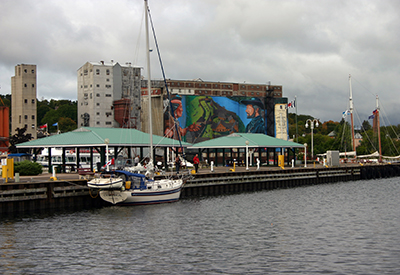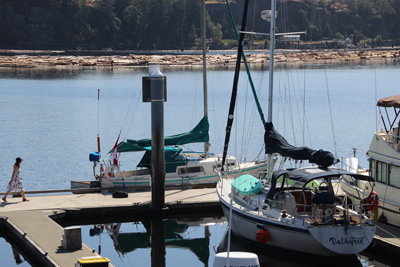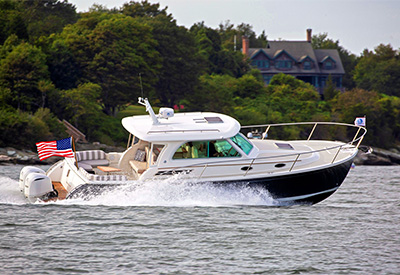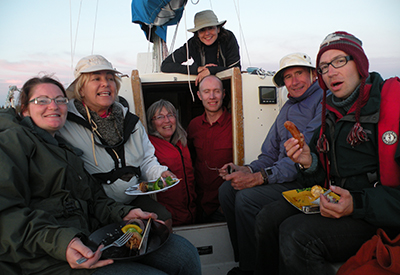Protecting North Channel Shoreline at Vidal Bay, Manitoulin Island
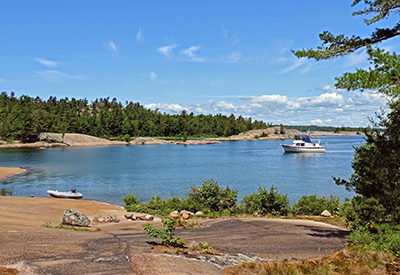
The North Channel is one of the most beautiful sailing destinations on the planet – known the world over for its spectacular scenery, its clear waters inviting you in for a cool dip, and its pristine shorelines boasting stunning jagged coastline and quiet coves. Following the southern border of the channel is Manitoulin Island – the largest freshwater island in the world. Manitoulin Island is not only beautiful to look at from the water, it is an internationally significant island for conservation. Manitoulin supports some of the highest quality alvar habitat on the planet interspersed within sand plain forests, wetlands, sand dunes, shoreline and the Niagara Escarpment. At the northern edge of southern Ontario, Manitoulin is home to wide ranging mammals, including black bear and gray wolves, and provides an important stopover area for migratory birds.
The Nature Conservancy of Canada (NCC) has an amazing opportunity to protect 7,608 hectares (18,800 acres) on Manitoulin Island at Vidal Bay. When combined with nearby and adjacent conservation lands that NCC has already conserved, this will become a protected area complex of almost 250 square kilometres (24,860 hectares; 61,435 acres) – the largest of its kind south of the Canadian shield in Ontario. It will conserve an astonishing 86 kilometres of Great Lakes shoreline, more than twice what is currently protected at Bruce Peninsula National Park.
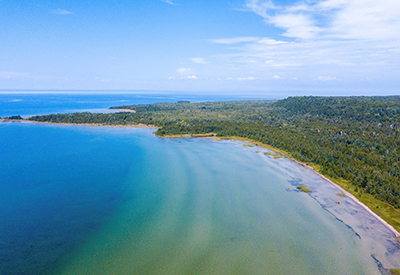 The Vidal Bay Forests and Shoreline property features coastal cliffs, over 18 kilometres of undeveloped North Channel shoreline, inland lakes and wetlands, intact forests and alvars. According to the International Alvar Conservation Initiative, the alvars of western Manitoulin Island are the best remaining examples of this type of globally rare habitat in North America, where the limestone pavements and thin soils set the stage for a unique assemblage of rare and endemic plant species.
The Vidal Bay Forests and Shoreline property features coastal cliffs, over 18 kilometres of undeveloped North Channel shoreline, inland lakes and wetlands, intact forests and alvars. According to the International Alvar Conservation Initiative, the alvars of western Manitoulin Island are the best remaining examples of this type of globally rare habitat in North America, where the limestone pavements and thin soils set the stage for a unique assemblage of rare and endemic plant species.
Protecting large swaths of high-quality habitat and shoreline is also essential for the ongoing survival of the millions of migratory birds passing through southern Ontario every spring and fall. This area supports a wide range of birds, including warblers, vireos and scarlet tanagers. The wetlands and shoreline are important habitat for breeding and migrating waterfowl, including ducks, loons and grebes. With its protection, we will be able to continue to enjoy these birds into the future.
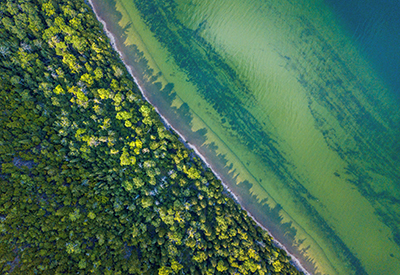 MNIDOO MNISING – THE HEART AND SPIRIT OF THE GREAT LAKES
MNIDOO MNISING – THE HEART AND SPIRIT OF THE GREAT LAKES
The property NCC is raising funds to protect is located directly north of and adjacent to the 6,530 hectare (16,135 acre) Queen Elizabeth The Queen Mother Mnidoo Mnissing Provincial Park, a property NCC and their partners were instrumental in conserving in the late 1990s. Just to the west is NCC’s Cockburn Island Conservation Lands, nearly 10,730 hectares (26,500 acres). By securing Vidal Bay Forests and Shoreline, they will create a total protected complex of over 24,860 hectares (61,435 acres). This project will set a new standard for large, landscape-scale conservation in southern Ontario. It will redefine the vision of wildlife corridors in the province, creating a shore to shore, continuous stretch of wilderness in an area where projects of this magnitude are rare.
Mnidoo Mnising in the Anishnaabeg language means the Heart and Spirit of the Great Lakes. By protecting the Vidal Bay Forests and Shoreline property, they will be helping to further protect the heart of Manitoulin Island. Indeed, this project is truly vital to Great Lakes conservation.
Manitoulin Island is the traditional territory of the M’Chigeeng First Nation, Aundeck Omni Kaning First Nation, Sheguiandah First Nation, Sheshegwaning First Nation, Whitefish River First Nation, Wikiwimekong First Nation and Zhiibaahaasing First Nation. With gratitude and respect, NCC acknowledges the significant, ongoing role of Indigenous Peoples on these lands. They look forward to continuing to engage with these communities in discussions about ways that these natural lands can continue to support the people with whom they are intertwined.
 A REGION UNDER PRESSURE
A REGION UNDER PRESSURE
Manitoulin Island is and always has been a priority for conservation for its undeveloped Great Lakes shorelines, globally rare alvars and meadow marshes. The island hosts an abundance of wildlife including globally rare and at-risk plants such as lakeside daisy and Hill’s thistle, at-risk birds and reptiles, amphibians and mammals, as well as the endangered mottled duskywing butterfly.
But the island faces many challenges. Each year, the quiet beaches, soaring cliffs and clear turquoise water bring more people to visit Manitoulin Island. Ever growing development pressures for cottages and second homes pose a significant threat and, like most Great Lake shorelines, the opportunities for significant conservation outcomes have become few and far between.
 CONSERVATION TO COMBAT CLIMATE CHANGE
CONSERVATION TO COMBAT CLIMATE CHANGE
The Vidal Bay Forests and Shoreline project, when combined with the neighbouring provincial park and conservation lands on Cockburn Island, would constitute the largest protected network of conservation land in Ontario south of the Canadian Shield – one of the most difficult geographies in Canada in which to achieve conservation at scale. Protecting large natural spaces not only benefits the species they sustain, it also ensures investment in the services they provide. Large intact wetlands, forest and wildlife corridors significantly benefit Canada’s biodiversity and provide an economic return to local communities by cleaning our air and water, helping to control flooding and storing carbon. Protecting long stretches of shoreline helps ensure water quality in the Great Lakes.
THE TIME IS NOW
NCC has a small window in which to protect the Vidal Bay Forests and Shoreline property. They must raise $16,000,000 to secure and steward this vast coastal wilderness. To learn more and to help protect North Channel shoreline and the Vidal Bay property, visit www.natureconservancy.ca/vidalbay.


